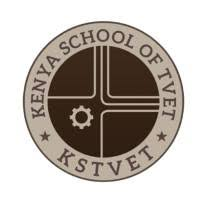Electrical and Electronic Principles and Technology
3. Transformers
3.1. Introduction to Transformers
Introduction
A transformer is a static electrical device used to transfer electrical energy between two or more circuits through electromagnetic induction. It is mainly used to increase (step-up) or decrease (step-down) AC voltages. Transformers play a critical role in electrical power distribution, allowing high-voltage transmission for efficiency and low-voltage delivery for safety.
Working Principle
Transformers operate based on Faraday’s Law of Electromagnetic Induction:
When an alternating current (AC) flows through the primary coil, it creates a changing magnetic field, which induces a voltage in the secondary coil.
-
Only works with AC (not DC).
-
No direct electrical connection between primary and secondary windings – energy is transferred via magnetic field.
Basic Structure
-
Primary Winding – Connected to the input AC supply.
-
Secondary Winding – Delivers the transformed voltage.
-
Core – Soft iron material that links magnetic flux between the windings.
Key Formulas
-
Turns Ratio:
Where:
-
Vp,
Vs: Primary and secondary voltages
-
Np,
Ns: Primary and secondary turns
-
-
Current Ratio:
-
Power Conservation (Ideal Transformer):
Types of Transformers
| Type | Function | Example Use |
|---|---|---|
| Step-Up | Increases voltage | Power stations |
| Step-Down | Decreases voltage | Home adapters |
| Isolation Transformer | Voltage remains same, provides safety | Medical equipment |
| Auto-Transformer | Single winding acts as both primary & secondary | Voltage regulation |
| Instrument Transformer | For measurement & protection | CTs and PTs in substations |
AC vs DC with Transformer
| Feature | AC | DC |
|---|---|---|
| Transformer Use | ✅ Yes (essential) | ❌ No (doesn't work) |
| Reason | Changing current induces EMF | No changing flux in DC |
Applications
-
Power transmission & distribution
-
Mobile phone chargers
-
UPS and inverters
-
Audio systems
-
Instrumentation and measurement
Core Types
| Core Type | Description |
|---|---|
| Laminated Core | Reduces eddy current losses |
| Toroidal Core | Ring-shaped, high efficiency |
| Shell Type | Windings enclosed by core on both sides |
Losses in Transformers
-
Iron Losses – Hysteresis + Eddy current loss (in the core)
-
Copper Losses –
I2R losses in windings
-
Flux Leakage – Not all flux links both windings
-
Dielectric Loss – In insulation
Efficiency:
Simple Diagram Explanation
-
Magnetic flux links the two windings through the iron core.
-
Voltage depends on the turns ratio between coils.
